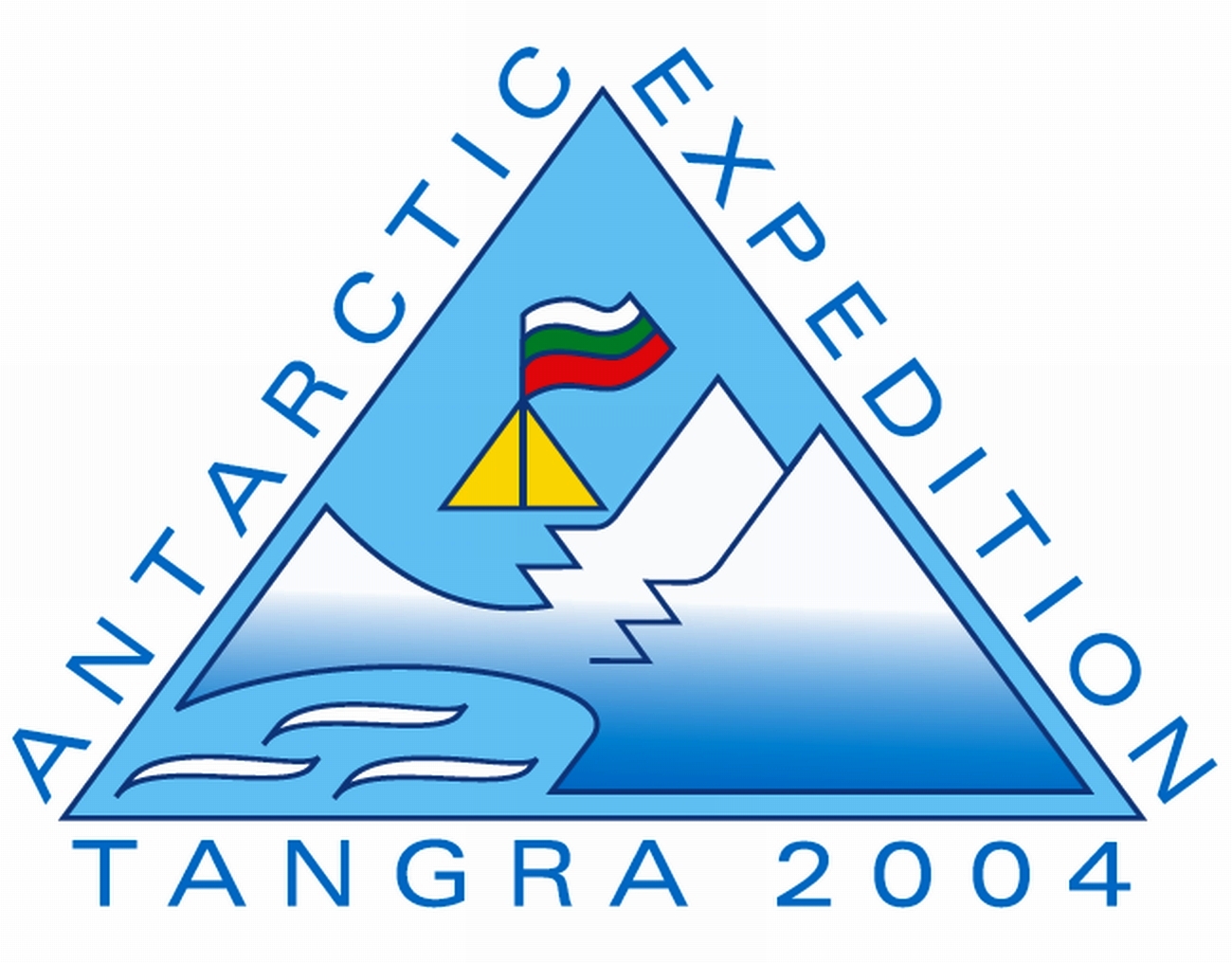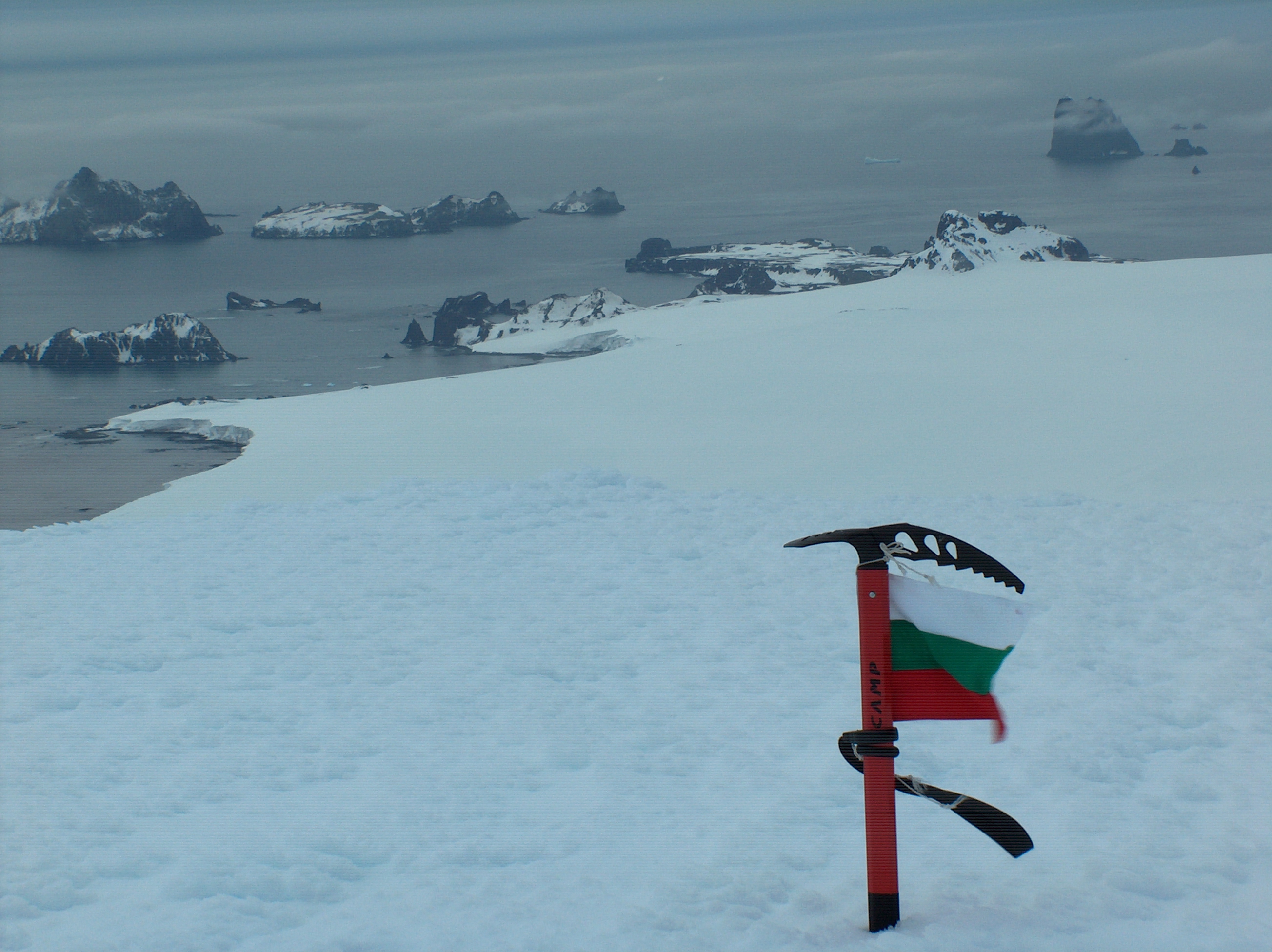|
Varna Peninsula
Varna Peninsula (, ) is a roughly rectangular predominantly ice-covered peninsula forming the northeast extremity of Livingston Island in the South Shetland Islands, Antarctica. It is bounded by Hero Bay to the northwest, by Moon Bay to the southeast, and by McFarlane Strait to the northeast. The peninsula is approximately 14 km long in the southwest–northeast direction and 10 km wide, with a central area occupied by Vidin Heights. The north and east extremities of Varna Peninsula are formed by Phelps Promontory and Williams Point, and by Inott Point respectively. The coast is indented by Lister Cove and Dragon Cove to the northeast, and by Griffin Cove, Charybdis Cove and Eliseyna Cove to the northwest. Bezmer Point is also on the northwest coast of the peninsula. The area was visited by early 19th century sealers. Williams Point was the first land discovered in the Antarctic Treaty area, by the British navigator William Smith on 19 February 1819. Varn ... [...More Info...] [...Related Items...] OR: [Wikipedia] [Google] [Baidu] |
Charybdis Cove
Charybdis Cove is the 1.2 km wide cove indenting for 580 m the northwest coast of Varna Peninsula, Livingston Island in the South Shetland Islands, Antarctica and entered between Organpipe Point to the north and Slab Point to the south. The feature is named after the Charybdis, a mythical Greek sea monster which wrecked ships and devoured sailors. Location The cove is centred at which is 16.25 km northeast of Siddins Point and 2.92 km south-southwest of Williams Point Williams Point is the point forming both the north extremity of Varna Peninsula and the northeast tip of Livingston Island in the South Shetland Islands, Antarctica. Separated from Zed Islands to the north by Iglika Passage. The discovery o ... (British mapping in 1968, and Bulgarian mapping in 2005 and 2009). Maps * L.L. Ivanov et al. Antarctica: Livingston Island and Greenwich Island, South Shetland Islands. Scale 1:100000 topographic map. Sofia: Antarctic Place-names Commission of ... [...More Info...] [...Related Items...] OR: [Wikipedia] [Google] [Baidu] |
Antarctic Place-names Commission
The Antarctic Place-names Commission was established by the Bulgarian Antarctic Institute in 1994, and since 2001 has been a body affiliated with the Ministry of Foreign Affairs (Bulgaria), Ministry of Foreign Affairs of Bulgaria. The Commission approves Bulgarian place names in Antarctica, which are formally given by the List of Presidents of Bulgaria, President of the Republic according to the Constitution of Bulgaria, Bulgarian Constitution (Art. 98) and the established international practice. Bulgarian names in Antarctica Geographical names in Antarctica reflect the history and practice of Antarctic exploration. The nations involved in Antarctic research give new names to nameless geographical features for the purposes of orientation, logistics, and international scientific cooperation. As of 2023, there are some 20,125 named Antarctic geographical features, including 1,606 features with names given by Bulgaria. [...More Info...] [...Related Items...] OR: [Wikipedia] [Google] [Baidu] |
Tangra 2004/05
The Tangra 2004/05 Expedition was commissioned by the Antarctic Place-names Commission at the Ministry of Foreign Affairs (Bulgaria), Ministry of Foreign Affairs of Bulgaria, managed by the Manfred Wörner Foundation, and supported by the Bulgarian Antarctic Institute, the Institute of Mathematics and Informatics at the Bulgarian Academy of Sciences, Bulgarian Posts, Uruguayan Antarctic Institute, Peregrine Shipping (Australia), and Petrol Ltd, TNT, Mtel, Bulstrad, Polytours, B. Bekyarov and B. Chernev (Bulgaria). Expedition team Dr. Lyubomir Ivanov (explorer), Lyubomir Ivanov (team leader), senior research associate, Institute of Mathematics and Informatics at the Bulgarian Academy of Sciences; chairman, Antarctic Place-names Commission; author of the 1995 Bulgarian Antarctic wikisource:Toponymic Guidelines for Antarctica, ''Toponymic Guidelines'' introducing in particular the present official system for the Streamlined System for the Romanization of Bulga ... [...More Info...] [...Related Items...] OR: [Wikipedia] [Google] [Baidu] |
Toponyms
Toponymy, toponymics, or toponomastics is the study of '' toponyms'' (proper names of places, also known as place names and geographic names), including their origins, meanings, usage, and types. ''Toponym'' is the general term for a proper name of any geographical feature, and full scope of the term also includes proper names of all cosmographical features. In a more specific sense, the term ''toponymy'' refers to an inventory of toponyms, while the discipline researching such names is referred to as ''toponymics'' or ''toponomastics''. Toponymy is a branch of onomastics, the study of proper names of all kinds. A person who studies toponymy is called ''toponymist''. Etymology The term ''toponymy'' comes from / , 'place', and / , 'name'. The ''Oxford English Dictionary'' records ''toponymy'' (meaning "place name") first appearing in English in 1876 in the context of geographical studies. Since then, ''toponym'' has come to replace the term ''place-name'' in professional disc ... [...More Info...] [...Related Items...] OR: [Wikipedia] [Google] [Baidu] |
Bulgarian Black Sea Coast
The Bulgarian Black Sea Coast (), also known as the Bulgarian Riviera, covers the entire eastern bound of Bulgaria stretching from the Romanian Black Sea resorts in the north to European Turkey in the south, along 378 km of coastline. White and golden sandy beaches occupy approximately 130 km of the 378 km long coast. The region is an important center of tourism during the summer season (May–October), drawing millions of foreign and local tourists alike and constituting one of the country's most popular tourist destinations. Prior to 1989 the Bulgarian Black Sea coast was internationally known as the ''Red Riviera''. Since the fall of the Iron Curtain, however, its nickname has been changed to the ''Bulgarian Riviera''. The Bulgarian Black Sea Coast has a humid subtropical climate (Köppen climate classification ''Cfa''), with considerable maritime and continental influences. The area's average air temperature in the summer is about 28 °C ... [...More Info...] [...Related Items...] OR: [Wikipedia] [Google] [Baidu] |
Varna, Bulgaria
Varna (, ) is the List of cities and towns in Bulgaria, third-largest city in Bulgaria and the largest city and seaside resort on the Bulgarian Black Sea Coast and in the Northern Bulgaria region. Situated strategically in the Gulf of Varna, the city has been a major economic, social and cultural centre for almost three millennia. Historically known as ''Odessos'' (), Varna developed from a Thracian seaside settlement into a major seaport on the Black Sea. Varna is an important centre for business, transportation, education, tourism, entertainment, and healthcare. The city is referred to as the maritime capital of Bulgaria and has the headquarters of the Bulgarian Navy and merchant marine. In 2008, Varna was designated as the seat of the Black Sea Euroregion by the Council of Europe. In 2014, Varna was awarded the title of European Youth Capital 2017. The oldest gold treasure in the world, belonging to the Varna culture, was discovered in the Varna Necropolis and dated to 4600 ... [...More Info...] [...Related Items...] OR: [Wikipedia] [Google] [Baidu] |
William Smith (mariner)
William Smith (c. 1790–1847) was an English captain born in Blyth, Northumberland, who discovered the South Shetland Islands, an archipelago off the Graham Land in Antarctica. His discovery was the first ever made south of 60° south latitude, in the present Antarctic Treaty area. Early life and Apprenticeship Earsdon Parish Records held at Woodhorn Museum show that William, eldest son of William and Mary Smith, was baptised at St. Cuthbert's Church on 10 October 1790. Smith had a younger brother, Thomas, and sister, Mary, and his father was a Joiner of Seaton Sluice. In the eighteenth century, boys would start their seven-year apprenticeship at sea at the age of fourteen. According to John Miers' account of the discovery, William Smith had undertaken his apprenticeship ‘in the Greenland whale-fishery’. (At that time, there was a substantial British whaling industry, including to Greenland.) During his life he worked with Richard Siddins, described by hi ... [...More Info...] [...Related Items...] OR: [Wikipedia] [Google] [Baidu] |
Antarctic Treaty
The Antarctic (, ; commonly ) is the polar region of Earth that surrounds the South Pole, lying within the Antarctic Circle. It is diametrically opposite of the Arctic region around the North Pole. The Antarctic comprises the continent of Antarctica, the Kerguelen Plateau, and other island territories located on the Antarctic Plate or south of the Antarctic Convergence. The Antarctic region includes the ice shelves, waters, and all the island territories in the Southern Ocean situated south of the Antarctic Convergence, a zone approximately wide and varying in latitude seasonally. The region covers some 20 percent of the Southern Hemisphere, of which 5.5 percent (14 million km2) is the surface area of the Antarctica continent itself. All of the land and ice shelves south of 60°S latitude are administered under the Antarctic Treaty System. Biogeographically, the Antarctic realm is one of eight biogeographic realms on Earth's land surface. Climate change in Antar ... [...More Info...] [...Related Items...] OR: [Wikipedia] [Google] [Baidu] |





